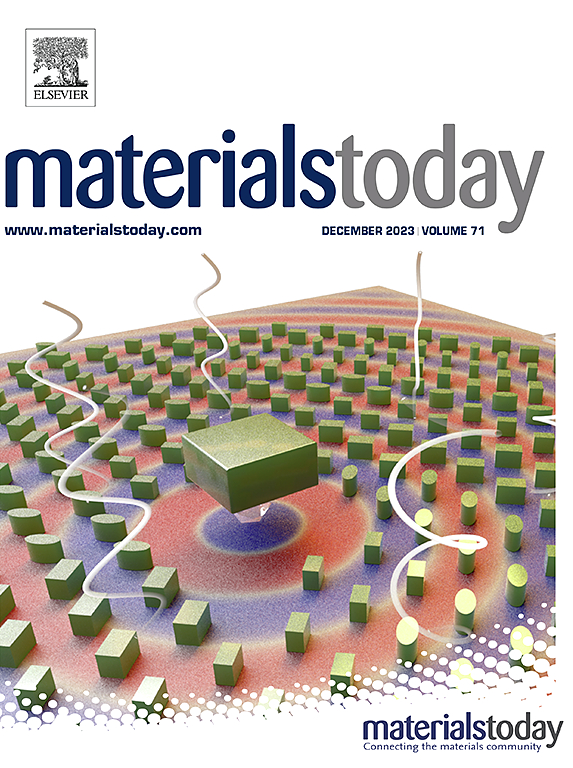Advancements in multimodal approaches for enhanced wound healing: From chemical to physical strategies
IF 22
1区 材料科学
Q1 MATERIALS SCIENCE, MULTIDISCIPLINARY
引用次数: 0
Abstract
Cutaneous injuries, especially chronic wounds are considered as one of the immense healthcare burdens for millions of patients over the worldwide. Persistent inflammation, comorbidities, impaired tissue regeneration and immunosuppression are defining characteristics, which complicate clinical management and highlight the need for innovative solutions in this critical area. However, the formation of biofilm and other polymicrobial interaction to host immunity envision resist the effectiveness of these approaches. Most modern wound care products create an optimal healing environment by removing waste tissue, preventing infections and maintaining a moist wound bed. This is often not enough to re-establish the healing process in chronic wounds. This review aims to systematically examine and understand state-of-the-art advances of physical/chemical cues and multimodal approaches to attain faster skin repair. It highlights the complexity in chronic wound healing process, while identifying limitations in current therapeutic approaches and ways to overcome via using chemical strategies (pH modulation, use of biomaterials and gas-mediated therapies and physical strategies (electrical stimulation, photothermal therapy and mechanotransduction). By clearly defining and analyzing these individual modalities, this present article highlights how their synergistic integration can regulate inflammation, promote angiogenesis, and enhance extracellular matrix remodeling. The scope further extends to discuss the translational potential of such hybrid approaches in clinical settings. Through this multidimensional framework, the review seeks to guide future research and innovation toward more effective and personalized wound healing solutions, ultimately aiming to improve healing outcomes and reduce long-term complications such as scarring.

促进伤口愈合的多模式方法的进展:从化学到物理策略
皮肤损伤,特别是慢性伤口被认为是全世界数百万患者的巨大医疗负担之一。持续性炎症、合并症、组织再生受损和免疫抑制是定义特征,这些特征使临床管理复杂化,并突出了在这一关键领域寻求创新解决方案的必要性。然而,生物膜的形成和其他多微生物相互作用对宿主免疫的设想抑制了这些方法的有效性。大多数现代伤口护理产品通过去除废组织、防止感染和保持湿润的伤口床来创造最佳的愈合环境。这通常不足以重建慢性伤口的愈合过程。这篇综述旨在系统地研究和理解物理/化学线索和多模式方法的最新进展,以实现更快的皮肤修复。它强调了慢性伤口愈合过程的复杂性,同时确定了当前治疗方法的局限性,以及通过化学策略(pH调节,使用生物材料和气体介导疗法)和物理策略(电刺激,光热疗法和机械转导)克服的方法。通过明确定义和分析这些个体模式,本文强调了它们的协同整合如何调节炎症、促进血管生成和增强细胞外基质重塑。范围进一步扩展到讨论这种混合方法在临床环境中的转化潜力。通过这一多维框架,该综述旨在指导未来的研究和创新,以更有效和个性化的伤口愈合解决方案,最终旨在改善愈合结果并减少疤痕等长期并发症。
本文章由计算机程序翻译,如有差异,请以英文原文为准。
求助全文
约1分钟内获得全文
求助全文
来源期刊

Materials Today
工程技术-材料科学:综合
CiteScore
36.30
自引率
1.20%
发文量
237
审稿时长
23 days
期刊介绍:
Materials Today is the leading journal in the Materials Today family, focusing on the latest and most impactful work in the materials science community. With a reputation for excellence in news and reviews, the journal has now expanded its coverage to include original research and aims to be at the forefront of the field.
We welcome comprehensive articles, short communications, and review articles from established leaders in the rapidly evolving fields of materials science and related disciplines. We strive to provide authors with rigorous peer review, fast publication, and maximum exposure for their work. While we only accept the most significant manuscripts, our speedy evaluation process ensures that there are no unnecessary publication delays.
 求助内容:
求助内容: 应助结果提醒方式:
应助结果提醒方式:


